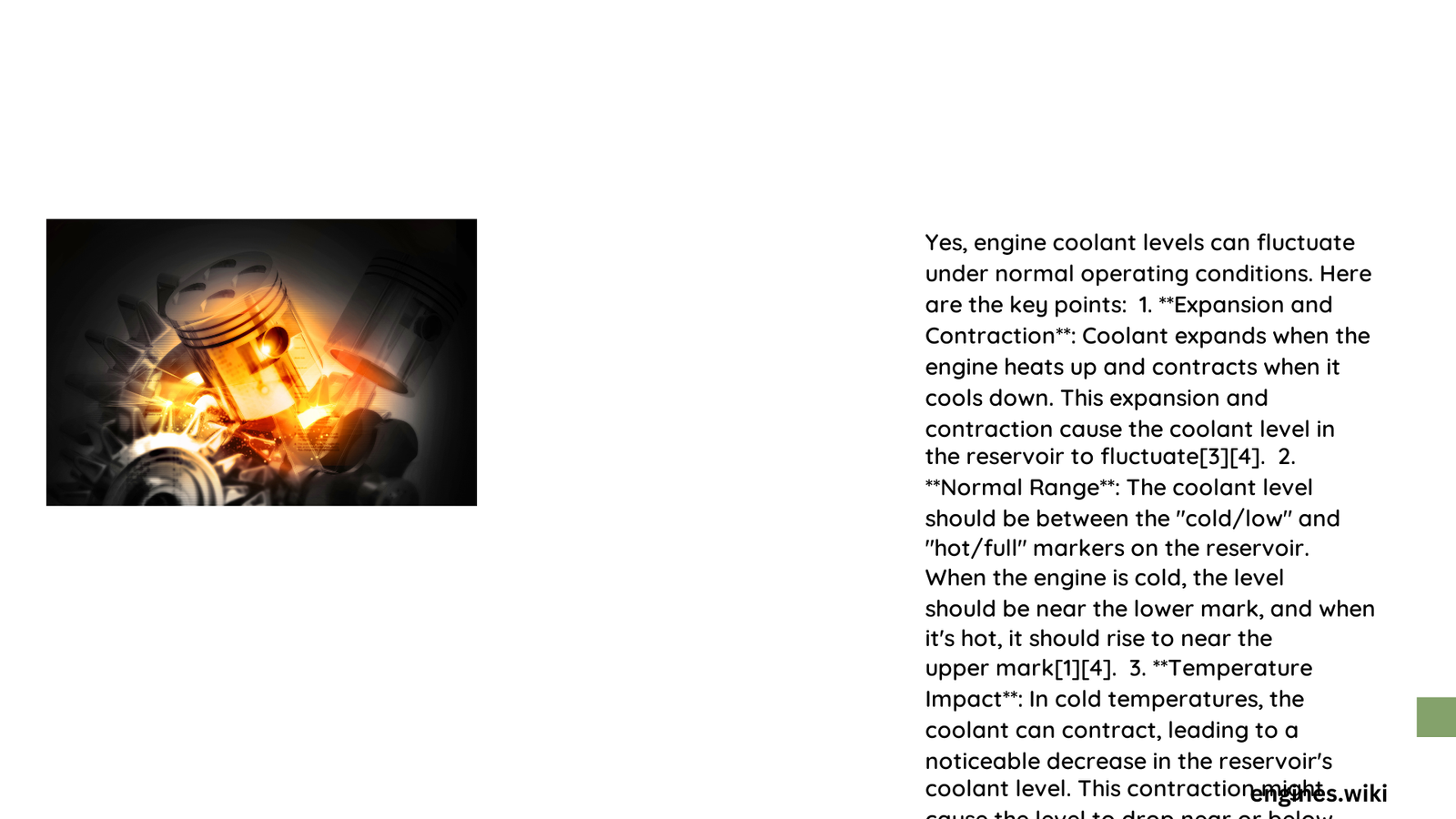Engine coolant levels naturally fluctuate due to complex thermal and pressure dynamics within a vehicle’s cooling system. These variations are typically normal and result from temperature expansions, pressure changes, and system design, but can also indicate potential mechanical issues that require careful diagnosis and potential intervention by automotive professionals.
What Causes Engine Coolant Level Changes?
Why Do Temperature Variations Impact Coolant Levels?
Temperature plays a critical role in coolant level fluctuations. When an engine starts cold, the coolant volume is minimal, but as temperatures rise, the liquid expands, increasing its volume. This expansion process is a standard mechanical behavior and does not necessarily indicate a problem.
Key Temperature-Related Factors
- Thermal Expansion: Coolant volume increases by approximately 7-10% when heated
- Pressure Build-up: Higher temperatures create increased system pressure
- Reservoir Interaction: Overflow tanks manage excess coolant during temperature shifts
What Are Common Reasons for Coolant Level Changes?
| Cause | Potential Impact | Severity |
|---|---|---|
| Normal Temperature Cycling | Minor Level Variations | Low Risk |
| Microscopic System Leaks | Gradual Level Reduction | Medium Risk |
| Damaged Gaskets | Consistent Level Drops | High Risk |
| Radiator Cap Malfunction | Pressure Regulation Issues | High Risk |
How Can You Detect Abnormal Coolant Level Fluctuations?
Detecting abnormal coolant level changes requires systematic observation:
- Visual Inspection
- Check reservoir levels regularly
- Look for consistent drops between service intervals
-
Observe color and clarity of coolant
-
Performance Indicators
- Engine temperature gauge readings
- Warning light activations
- Unusual engine performance characteristics
When Should You Be Concerned About Coolant Level Changes?
Red Flags Requiring Immediate Attention
- Rapid coolant level drops
- Visible external leaks
- Consistent overheating
- White smoke from exhaust
- Sweet burning smell
What Maintenance Practices Prevent Coolant Level Issues?
Recommended Maintenance Schedule:
– Check coolant levels monthly
– Perform complete system flush every 30,000 miles
– Use manufacturer-recommended coolant mixtures
– Inspect hoses and connections annually
Technical Insights into Coolant System Dynamics
Modern cooling systems are engineered with sophisticated pressure management mechanisms. The radiator cap, often overlooked, plays a crucial role in maintaining proper coolant circulation and preventing excessive pressure buildup.
Coolant Composition Matters
- Ethylene Glycol: Standard automotive coolant
- Propylene Glycol: Environmentally friendly alternative
- Recommended Mixture: 50% coolant, 50% distilled water
Professional Diagnostic Recommendations
While minor coolant level fluctuations are normal, persistent changes warrant professional evaluation. Automotive technicians can perform pressure tests, thermal imaging, and comprehensive system diagnostics to identify underlying issues.
Conclusion

Understanding engine coolant level dynamics requires a nuanced approach. Regular monitoring, proactive maintenance, and professional consultation ensure your vehicle’s cooling system operates efficiently and prevents potential long-term damage.
